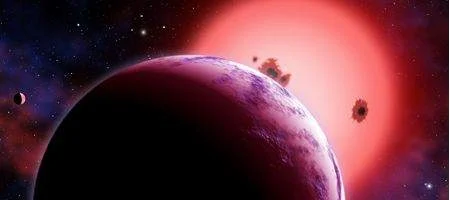So-called super-Earth planets may have a magnetic shield that could protect any life present from harmful radiation, say researchers.

The mantles of Earth and other rocky planets are rich in magnesium and oxygen. Magnesium’s highly resistant to changes when under intense pressures and temperature, and theoretical predictions claim that it has just three unique states with different structures and properties present under planetary conditions.
It can be solid under ambient conditions (such as on the Earth’s surface), liquid at high temperatures, and another form of solid at high pressure . However, until now this last structure had never been observed in nature or in experiments.
But a University of Rochester team has now observed magnesium oxide between pressures of about three million to 14 million times normal atmospheric pressure, and at temperatures reaching as high as 90,000 degrees Fahrenheit – conditions that range from those at the center of our Earth to those of large exoplanet super-Earths.
And they found substantial changes in molecular bonding through these various conditions – including a transformation to the theorized high-pressure solid phase.
It also appears that, when melting, magnesium oxide changes from an electrically insulating material like quartz to a metal, allowing electrons to flow easily through it.
The implication of this is that the early Earth’s magma ocean might have been able to generate a magnetic field – and that the metallic, liquid phase of magnesium oxide could well exist today in the deep mantles of super-Earth planets, as well as the newly-observed solid phase.
“Our findings blur the line between traditional definitions of mantle and core material and provide a path for understanding how young or hot planets can generate and sustain magnetic fields,” says Stewart McWilliams of the Carnegie Institution.






